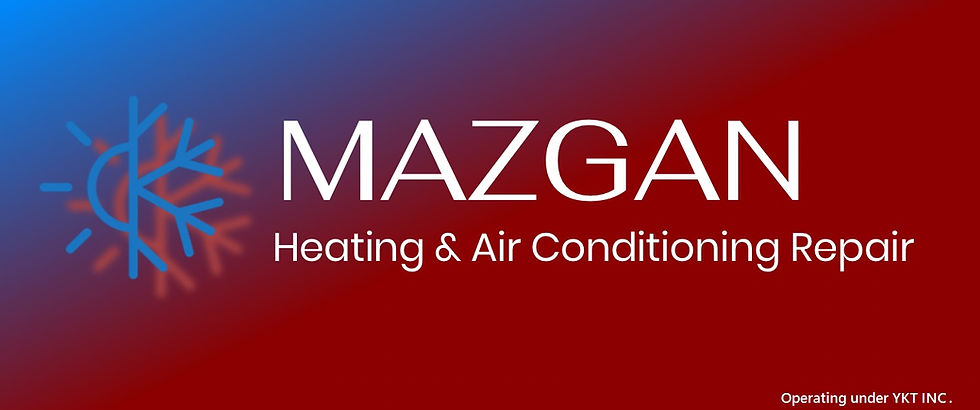Efficient HVAC Troubleshooting Tips for Homeowners
- y k

- Jul 16
- 3 min read
As a homeowner, few things are as frustrating as an HVAC system that isn't working properly. Whether it's the sweltering heat of summer or the biting cold of winter, a malfunctioning heating, ventilation, and air conditioning (HVAC) system can make your home uncomfortable. Fortunately, many HVAC issues can be resolved with a little troubleshooting. In this post, we will explore efficient HVAC troubleshooting tips that every homeowner should know.
Understanding Your HVAC System
Before diving into troubleshooting, it is essential to understand the basic components of your HVAC system. Most systems consist of:
Thermostat: This device controls the temperature in your home.
Furnace/Heat Pump: This is the heating component of your system.
Air Conditioner: This is the cooling component.
Ductwork: This is the network of ducts that distribute air throughout your home.
Filters: These trap dust and debris to keep the air clean.
Knowing these components will help you identify where the problem might be occurring.
Common HVAC Problems
Here are some common HVAC issues that homeowners face:
Inconsistent Temperatures: Some rooms may be too hot or too cold.
Noisy Operation: Strange sounds can indicate a problem.
Poor Airflow: Weak airflow can make your system less efficient.
Frequent Cycling: The system turns on and off too often.
High Energy Bills: A sudden spike in your energy bill can signal an issue.
Recognizing these problems early can save you time and money in repairs.
Basic Troubleshooting Steps
Check the Thermostat
The first step in troubleshooting is to check your thermostat. Make sure it is set to the desired temperature and is functioning correctly.
Replace Batteries: If your thermostat is battery-operated, replace the batteries.
Calibration: Ensure that the thermostat is calibrated correctly. You can do this by comparing it to a separate thermometer.
Inspect the Air Filters
Dirty air filters can restrict airflow and reduce efficiency.
Check Monthly: Inspect your filters monthly, especially during peak usage seasons.
Replace Regularly: Change your filters every 1-3 months, depending on usage.
Examine the Circuit Breaker
Sometimes, the issue may be as simple as a tripped circuit breaker.
Locate the Breaker Box: Find your home's breaker box and check for any tripped breakers.
Reset if Necessary: If you find a tripped breaker, reset it and see if your HVAC system starts working again.
Look for Blockages
Check for any blockages in your ductwork or vents.
Inspect Vents: Ensure that all vents are open and not obstructed by furniture or other items.
Clean Ducts: If you notice dust buildup, consider having your ducts cleaned.
Advanced Troubleshooting Techniques
If basic troubleshooting does not resolve the issue, you may need to take more advanced steps.
Check the Condenser Unit
For air conditioning systems, the condenser unit is crucial.
Inspect for Debris: Make sure the area around the condenser is clear of leaves, dirt, and other debris.
Clean the Coils: Dirty coils can reduce efficiency. Use a soft brush to clean them gently.
Assess the Refrigerant Levels
Low refrigerant levels can cause your air conditioner to malfunction.
Look for Leaks: Check for any signs of refrigerant leaks, such as ice buildup on the coils.
Call a Professional: If you suspect low refrigerant, it is best to call a licensed technician to handle it.
Evaluate the Ductwork
Leaky ducts can lead to significant energy loss.
Inspect for Damage: Look for any visible damage or gaps in the ductwork.
Seal Leaks: Use duct tape or mastic sealant to seal any leaks you find.
When to Call a Professional
While many HVAC issues can be resolved by homeowners, some problems require professional help.
Complex Repairs: If you are dealing with complex issues like electrical problems or major component failures, it is best to call a professional.
Regular Maintenance: Schedule regular maintenance checks with a qualified technician to keep your system running smoothly.
Seasonal Maintenance Tips
To prevent issues before they arise, consider these seasonal maintenance tips.
Spring Maintenance
Clean the Condenser: Remove debris and clean the coils.
Check the Thermostat: Ensure it is functioning correctly before the cooling season begins.
Fall Maintenance
Inspect the Furnace: Check for any signs of wear and tear.
Change Filters: Replace filters to prepare for the heating season.
Energy Efficiency Tips
Improving your HVAC system's efficiency can save you money on energy bills.
Use a Programmable Thermostat: This allows you to set temperatures based on your schedule.
Seal Windows and Doors: Prevent drafts by sealing any gaps around windows and doors.
Conclusion: Keeping Your Home Comfortable
By following these efficient HVAC troubleshooting tips, you can keep your home comfortable year-round. Regular maintenance and prompt attention to issues can save you time and money in the long run. Remember, if you ever feel overwhelmed, do not hesitate to call a professional. Your comfort is worth it.



Comments